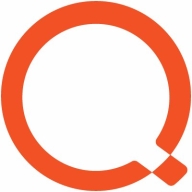

Microsoft Intune and Quest KACE SMA compete in the realm of device management solutions. The data shows that Microsoft Intune holds a slight advantage due to its integration within the Microsoft ecosystem, facilitating seamless device and policy management via Azure and Office 365.
Features: Microsoft Intune offers robust integration with the Microsoft ecosystem, facilitating seamless management of devices through Azure and supporting Office 365. It is versatile with its capabilities for managing Windows systems and mobile device management. Quest KACE SMA is noted for its extensive systems deployment and patch management, along with detailed inventory and asset management suitable for asset-heavy environments.
Room for Improvement: Microsoft Intune requires enhancements in reporting, Linux device management, and granular iOS control in security and applications. It also needs better support for non-Microsoft environments. Quest KACE SMA could improve in scalability and user interface, particularly for larger deployments, and in integration with non-Dell hardware.
Ease of Deployment and Customer Service: Microsoft Intune, being cloud-based, offers easy deployment via the public cloud and supports hybrid setups. While its technical support is inconsistent, it benefits from extensive Microsoft community resources. Quest KACE SMA's on-premises nature presents challenges like managing physical appliances, though it excels in asset management once set up. Its technical support is well-received, but reliance on on-premises infrastructure can complicate deployment compared to cloud solutions.
Pricing and ROI: Microsoft Intune is perceived as cost-effective, especially when bundled with Microsoft 365 licenses. However, advanced features can increase costs. Quest KACE SMA is competitively priced for organizations that focus on asset management and deployment tasks, providing good value although smaller organizations may find it costly if not fully utilized. Both solutions offer ROI, contingent on their integration within existing organizational infrastructures.
Everything we've gained from it makes my job easier day after day, and I see value in it as an engineer.
Importantly, when someone leaves the company, it helps protect document access on their devices.
Applications are deployed through Intune, and we see fewer tickets for common issues because we can resolve them through the solution.
The return on investment is seen in the quick access to information, good inventory management, and efficient systems management.
When a support ticket is submitted, it directly reaches someone with Intune support expertise.
When I contacted Microsoft, they had the same expertise, if not more, which is phenomenal because I felt heard and my problem was solved.
Sometimes, the support provided is excellent, and the representative is knowledgeable, while other times, the service needs improvement.
I would rate the customer support for Quest KACE Systems Management Appliance (SMA) as a 10.
The customer service is very good, providing quick customer support in Spanish.
The scalability of Microsoft Intune is ten out of ten.
Ideally, we want to automatically segregate devices based on user properties like primary use, but currently, dynamic groups seem limited to device properties.
It supports organizations with 200 endpoints and those with more than 15,000 endpoints.
The product is very scalable as it supports 10,000 thousand endpoints with just one appliance.
We have outgrown the size of one KACE appliance and are now running two.
We have not experienced downtime, bugs, or glitches.
Microsoft Intune has been very stable.
A couple of years ago, the performance was not as good as it is now, but there are noticeable backend improvements.
Features like unlocking devices sometimes fail, and the support offered for other operating systems is insufficient.
There are communication issues, so you might start working with a feature without knowing if it will be deprecated six months from now.
Many third-party companies offer single-pane-of-glass reporting that shows you what your update environment looks like, how your patch is doing, application status, etc., but Intune's reporting is not intuitive.
Currently, we have to go into each org to deploy applications when we need them all across the university.
The user interface needs improvement as customers have mentioned they do not like the interface since it is not an SMA-based interface.
Introductory professional services, like a fast-track service, were included with our E5 membership, and there have been no additional costs.
The Intune suite and add-ons, such as batch management and remote help, are costly.
It costs approximately forty euros per user per month.
The pricing is in the middle range of the market, not too expensive but not the cheapest either.
My experience with pricing, setup cost, and licensing for Quest KACE Systems Management Appliance (SMA) is that, hands down, it beat all of the others in simplicity and pricing.
Intune excels in configuration and compliance management for Windows 10, ensuring devices receive timely updates and adhere to organizational standards.
Dynamic groups allow us to set conditions for automatic membership, eliminating the need for user intervention or manual review and ensuring a seamless workflow.
Windows Autopatch is the most valuable because it removes the burden of patch management.
Scripting has saved us hundreds of hours over the years when patching these vulnerabilities compared to how we did it before.
The most valuable features include simplicity, which makes systems management easier and faster, especially for device management.


Microsoft Intune provides centralized management of mobile devices and applications, ensuring security, compliance, and productivity through integration with Microsoft services like Microsoft 365 and Azure Active Directory.
Organizations use Intune for managing mobile devices and applications, enhancing security and compliance across platforms. With features like single sign-on, conditional access, and zero-touch deployment via Autopilot, it facilitates efficient operations. Intune's scalability, easy enrollment, and capabilities such as remote wipe support diverse device management, offering robust data protection and efficient operation. Despite its features, improvement areas include reporting, compatibility with non-Microsoft devices, and better support for macOS and Linux devices.
What are the key features of Microsoft Intune?
What benefits should users look for in reviews?
In industries such as finance, healthcare, and education, Microsoft Intune is implemented to ensure secure and compliant device management. Companies leverage its capabilities to deploy security policies and manage both corporate-owned and BYOD environments, facilitating a unified approach to data protection and compliance.
Quest KACE Systems Management Appliance is a comprehensive tool for managing IT endpoints. It facilitates asset management, software distribution, and endpoint tracking while offering remote access capabilities and a centralized help desk.
Quest KACE Systems Management Appliance is designed for organizations that need efficient endpoint management. It offers a range of features like inventory tracking, automated patch management, and ticketing. By integrating with remote access tools such as Bomgar, Quest KACE helps reduce manual tasks involved in managing software updates and system deployments. Although it faces challenges in scalability and requires improvements in integration and reporting, it remains a versatile choice for asset tracking and endpoint administration.
What are Quest KACE SMA's key features?
What benefits should users consider?
Quest KACE Systems Management Appliance is implemented across industries for managing IT assets and endpoints, particularly where remote management and compliance are critical. It's employed in healthcare, education, and government sectors for efficient patch management, inventory control, and software deployment, aiding organizations in managing security accreditations and centralizing help desk operations.
We monitor all Unified Endpoint Management (UEM) reviews to prevent fraudulent reviews and keep review quality high. We do not post reviews by company employees or direct competitors. We validate each review for authenticity via cross-reference with LinkedIn, and personal follow-up with the reviewer when necessary.